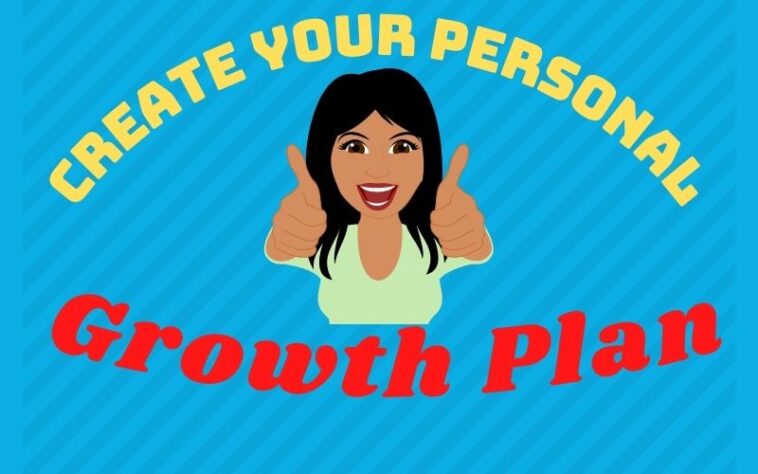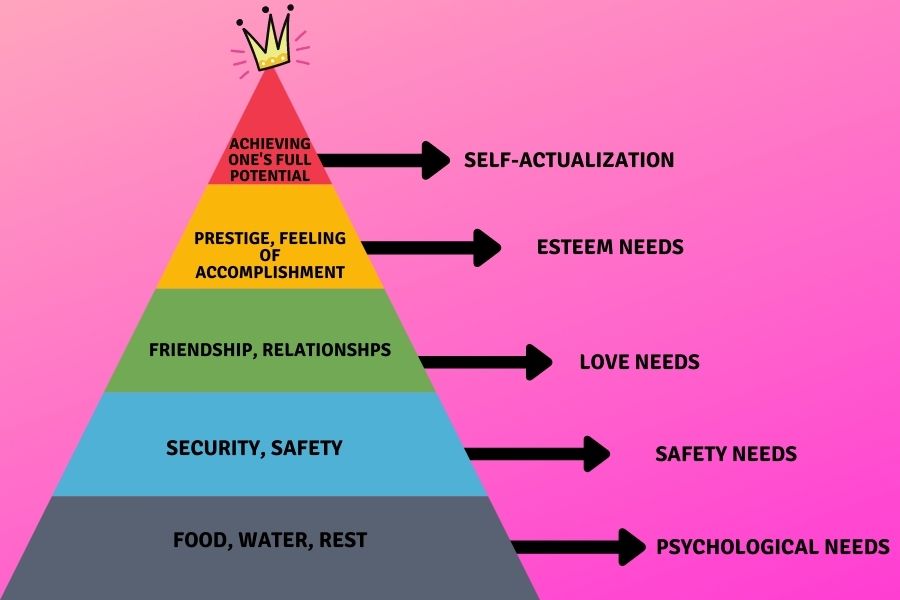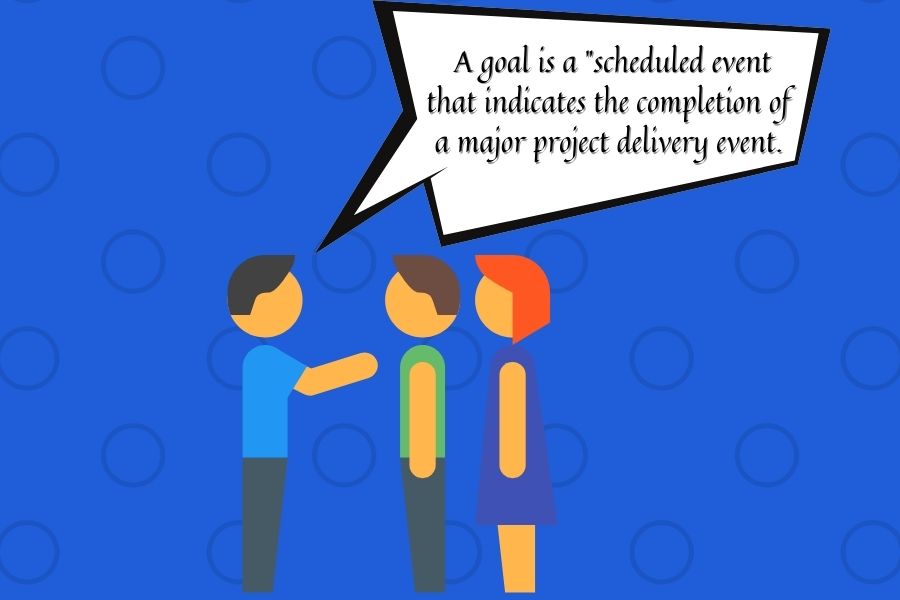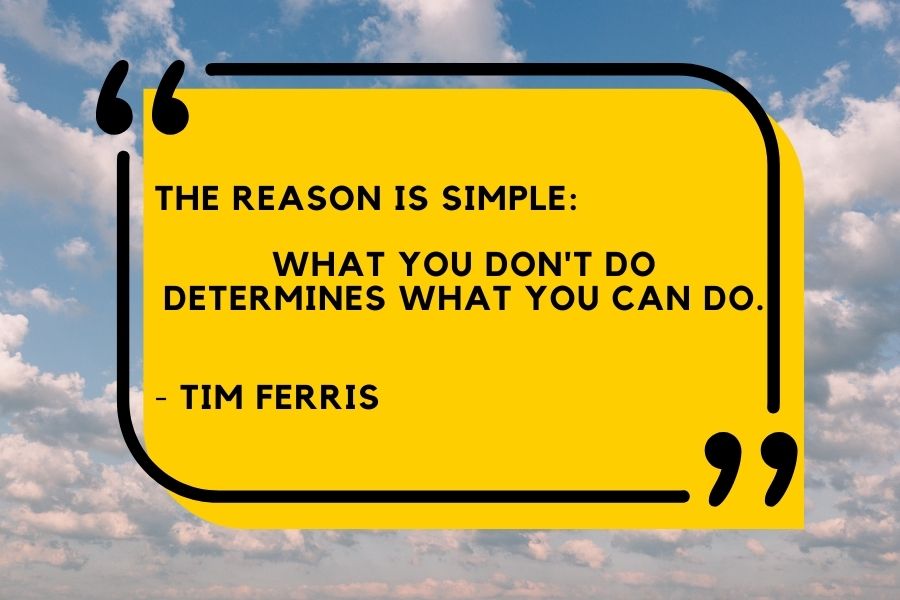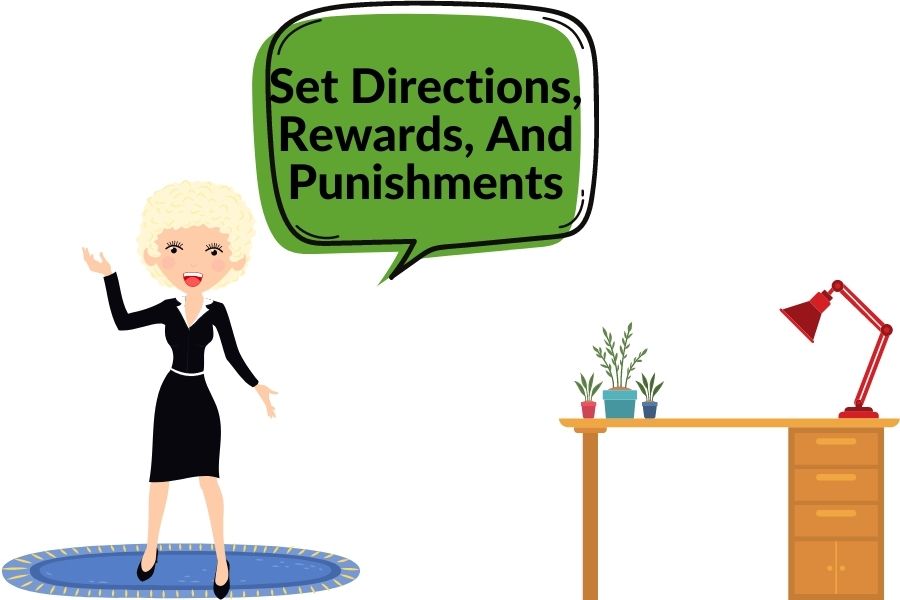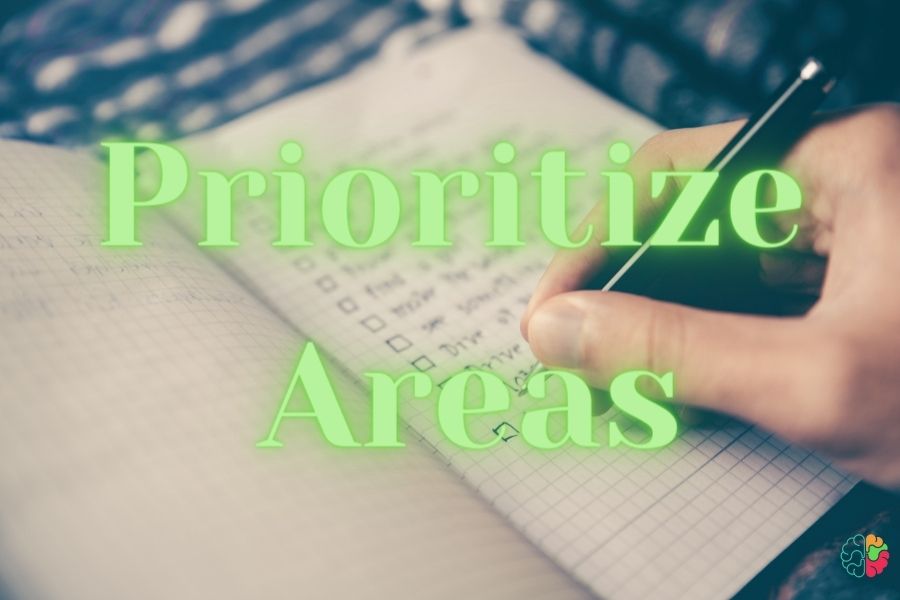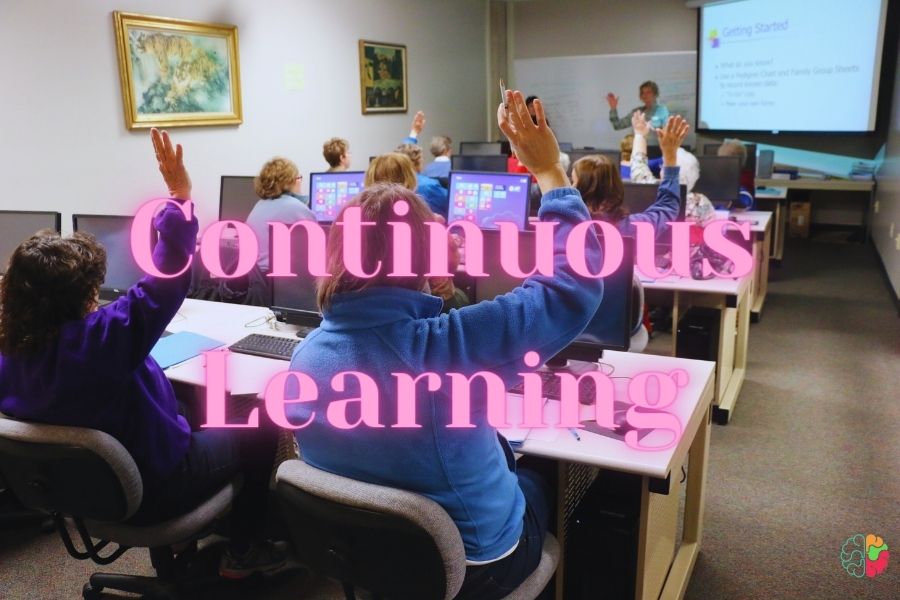Table of Contents
Most of us have places that we want to improve: eating well, staying fit, getting a promotion. But why aren’t we achieving our goals?
It isn’t just a case of a lack of motivation or maybe will. The majority of individuals lack a well-defined strategy for growth and transformation.
And after your original inspiration has faded away, the “how” and “why” will lead you along the way.
“Unless a commitment is made, there are only promises and hopes; but there are no plans.”
- Peter Drucker
To begin, a personal growth plan is described as “the process of developing an action plan for personal advancement in the sense of a job, schooling, relationship, or self-improvement focused on knowledge, beliefs, reflection, goal setting, and planning.”
As a result, personal development affects certain aspects of our lives and will benefit both our personal and professional lives.
Self-actualization, according to Maslow’s hierarchy of needs, is the highest level of personal satisfaction and the final step toward realizing one’s full and true potential.
A personal growth plan will assist you in realizing your personal goals. It’s also something the (future) boss is going to be involved in.
Create a comprehensive strategy for your own growth that will help you provide a concrete answer to the traditional question, “Where do you see yourself in five years?” You will improve your chance of being recruited by making a detailed plan for your own development.
If you are in pursuit of self-actualization then this podcast from Dante DiBattista can help you:
So, how do you go about creating a professional personal growth plan? Our seven-step process is here to help you.
1- Develop your vision
Begin your big journey with a clear idea of where you want to end up. What kind of person do you want to be? You may have a hazy notion, but it’s critical to describe it and write it down.
This will help you to consider what you’ll need to get there.
We’re both familiar with company goal statements.
The mission is a road map that aims to condense the brand’s values and intent into a few sentences.
In terms of personal growth, the task is just as important. Establishing inspiration for the personal growth mission, according to Roy Baumeister, a psychologist at Florida State University, is critical to its success and progress.
You’ll be able to see your decisions as part of a bigger image for it. This will aid you later in the execution so the requisite moves will be seen as deliberate decisions rather than assignments.
The reason you do what you do is summarized in your mission statement.
Its development necessitates a thorough examination of yourself. The following questions will assist you in determining your mission:
- What exactly is your goal?
- What kind of person do you want to be?
- What is your true calling?
- What motivates you?
- What are your core beliefs?
- What distinguishes you from others?
Mission: I use my SEO skills and also writing skills to help many startups grow through the digital marketing world.
Instead of being rigid, try to keep your view interactive. After the euphoria of achieving your target has worn off, this will save you from slipping down a dark hole.
The above goal statement will never be completed. There is still room for improvement.
You might also enjoy: 6 Reasons Why Success Is The Sum Of Small Efforts
2- Get your dose of reality
Examine your current situation after you’ve decided on your final destination. A personal growth plan, as the term suggests, needs a great deal of contemplation and self-awareness.
You must first determine the present situation in order to determine how to get from point A to point B and which places to concentrate on.
What skills do you have? What is the distance between your real self and your ideal self?
The SWOT analysis, which is a comparison matrix that businesses use to direct their approach, will help here once again.
It’s a fantastic matrix for figuring out your own skills (Strengths and Weaknesses) as well as your external world (Threats and Opportunities).
Jodie Shaw explains how to create a personal SWOT analysis in this post.
In order to master the next steps of your personal growth plan and strategy, you must evaluate this sort of knowledge and be mindful of your own ability set.
Read More: How To Avoid Negativity
3- Set goals
It’s time to describe your journey’s priorities now that you know where you are and where you want to go. A target is a “scheduled event that signals the completion of a significant project execution event,” according to the meaning.
To set your goals, follow the SMART technique to make sure they are …
- Specific
- Measurable
- Achievable
- Realistic
- Timely limited
“Run the New York City Marathon” might be a target for getting your body from plump to athletic, while “have an MBA” might be a goal for feeling unqualified to get a decent higher education.
To ensure progress, the target should be optimistic rather than merely challenging.
Push yourself to new heights. My mission statement could look like this, based on the example from the mission statement above:
Goal: Writing a guest blog post for a popular business blog (for example, Entrepreneur.com)
However, this purpose is potentially too far behind. To get there, I’ll have to work on my writing skills first. This can only be achieved by preparation and learning, so a target before that may be:
Goal: Writing ten blog posts for the users of my blog.
Setting intermediate targets has the added benefit of allowing you to reach and enjoy minor wins along the way, which can be very inspiring.
Now if you need more information about how to set a goal then this video from The Art of Improvement youtube channel can help you a lot:
Read More: Mindset Is Everything
4- Find supportive habits
Many people have succeeded in creating a simpler plan in their heads up to this stage, particularly as the new year approaches.
However, most people stop there, leaving their good wishes in limbo. You have no idea where to begin, how to get there, or how long it would take if you only have goals.
“Shoot for greatness. But greatness doesn’t always come from dramatic leaps. Sometimes it comes from small, persistent steps.”
Do you know what is necessary to get you one step closer to your goals? a positive and encouraging habits system!
Writing 500 words a day, for example, maybe an encouraging habit toward the target of writing 10 papers for Mindsetopia.
Also, another choice is to read 15 pages a day of a relevant novel (for example, Atomic Habits ).
Don’t focus on too many goals at once; instead, take it one at a time.
These patterns can help you in a variety of ways.
First, they push you to break down your targets into concrete acts.
Second, as these routine tasks become natural to do, main targets may become easier to complete.
After you’ve developed one habit, you can move on to the next.
5- Define what you should not do
There are too many distractions in today’s workplaces. You’re well aware that certain activities sabotage your success, such as scrolling through Facebook or checking the celebrities on Instagram.
However, we sometimes underestimate the amount of time we devote to this.
There are also other small events that you are unaware of that disrupt your routine and can seem to be productive at first sight (for example, reviewing your emails) or occur more unconsciously (for example, jumping from a back and forth between the open browser tabs).
The reason is simple: What you don’t do determines what you can do.
- Tim Ferris
When you want to set your personal development plan, instead of only focusing on what you want to do and goals, look at the process in reverse.
Develop a “don’ts guide list” to keep track of what you shouldn’t do. Consider the following examples:
- having too many tabs open on your browser
- Interrupt the morning hours with unnecessary meetings
- Check my social networks such as Facebook or Instagram several times a day
- Have all those notifications turned on
- Put the mobile on the desk. (throw it away! right now!)
- Open and reply to emails as soon as you see them in your inbox.
6- Set directions, rewards, and punishments
Setting the goal, as we’ve seen before, can be a powerful motivator.
This is an inherent source of inspiration, the most important explanation for what you’re doing.
But you’ll need something more realistic to keep track of your steps: a prompting and incentive scheme.
Consider the instructions like a GPS that will lead you in the right direction and tell you where to go next. There will be two benefits:
- Make mental space for yourself. You don’t have to recall any of the tasks; instead, concentrate on completing them
- Support the making of new habits by turning the behavior into a habit. This makes the performance more natural.
If your ultimate goal was to get in shape, you might, for example, bring your gym bag to work (cue, sign) to remind yourself of your intended action.
Calendar alerts may also be used as a reminder. Instead of remembering to do something, you can use something that makes you remember to do it.
Also, the classic “carrot and stick” metaphor can be used for this situation.
You’ll also need a series of rewards and punishments to make your cues and signals accurate.
We’re not any better than guinea pigs when it comes to sticking to our plans. Rewards are important for staying motivated and forming new habits.
Reward yourself when you’ve achieved your goal.
After you’ve done your duties for the day, you could reward yourself with a game of table football with your coworkers, 10 minutes of Instagram browsing, a slice of Swiss chocolate, 5 minutes of relaxing with your coworkers in the kitchen, and so on.
What if you are unable to complete the task? So, here’s where the stick fits in. If you didn’t write 500 words today, you’d have to make up for that tomorrow by writing 1,000 words, because if you didn’t work out, you’d be out of sweets. And you know what I’m talking about.
Prompts and rewards are exclusive to each person. Find out what drives you to go beyond and beyond with your personal growth plan.
Read More: How To Have A Positive Mindset At Work In 18 Steps
7- Plan reviews
It is only possible to estimate the processes necessary to reach your goals.
If your target was to lose 20 pounds in the next six months and you haven’t lost an ounce after 3 months, you should consider changing your strategy, such as exercising four days a week.
Cut carbohydrates from the food or do so once a week instead of twice.
Read this quoate from Peter Drucker:
“You can’t handle what you don’t measure.”
It means you need to measure your development and progress to know if the plan is working or not.
Measurement allows you to identify weaknesses in your strategy and keep yourself responsible.
If you notice that some things aren’t running or that some steps are absent from the schedule, you’ll need to go back and make adjustments.
Consider your personal growth plan as a dynamic document that you will review.
Digital project management applications such as Asana, Trello, and Evernote are very helpful and will make it simple to update the diagram.
We have quarterly feedback sessions with our team members to ensure that our efforts are on track and that we can change course quickly if necessary.
Treat your personal growth plan as if it were a job project in a company.
Who says you couldn’t have a meeting with yourself? Set aside a specific time and date for your own ratings, such as 30 minutes once a month, to concentrate only on evaluating your success and determining your next moves.
You should ask yourself the following questions during these reviews with yourself:
- What has proven to be effective in the path?
- What have I accomplished that I am proud of?
- Where did I run into issues?
- What is my stance on my long-term goals?
- What do I want to concentrate on in the coming month?
Based on your responses, you will be able to change your strategy.
Observing the process will also make your progress more visible, which will motivate you to continue.
Aside from planning, you’ll only be able to complete your personal growth project if you take the requisite steps to complete it.
A football player perfects his skills through constant practice, not just thinking about the training.
Our parents fulfill their role in raising their children by taking care of them every single day, not just reading parenting magazines and blogs!
At a certain level, you have to stop planning and start doing. So tell us, what is your next project? let me know in the comments.
You might also enjoy: Is Shadow Work Dangerous? 15 Ways To Practice It [2024]
8. Prioritize Areas
A crucial step in creating your personal growth plan is determining the key areas of your life that demand improvement.
Every facet of our lives adds to our overall well-being, therefore focusing on those essential areas can lead to a more balanced and satisfying living.
First of all, your jobs play a big role in how you live. If you need to, think about prioritizing goals for skill improvement, career promotion, or finding a more fulfilling job.
To improve your credentials and increase your job satisfaction, this may involve getting additional training or certifications.
Secondly, give your health and fitness first priority. Make a decision to enhance your physical and emotional fitness, whether it is through exercise, a healthy diet, or intellectual fitness techniques.
Include specific desires in your strategy, along with regular exercise routines, healthier eating practices, or mindfulness exercises.
Your relationships are also very important to your general happiness. Consider the relationships you have with your loved ones, friends, and dating partners.
Make goals for improving relationships, fostering deeper connections and amicably resolving problems.
You can develop a comprehensive personal growth plan that results in a more balanced, fulfilling, and enriched life by focusing on those main areas.
You might also enjoy: How to Glow Up Mentally and Physically: Top 25 Ways [2024]
9. Seek Inspiration
Finding role models, mentors, or inspirational people to look up to is a helpful strategy for your own growth process.
These people serve as beacons, offering guidance, encouragement, and inspiration as you work to establish yourself as a positive role model.
People you admire from a distance who make good role models include authors, public figures, and historical figures.
They serve as examples of qualities or accomplishments that align with your goals and ideals.
Following their journeys and learning from their experiences might inspire you to overcome obstacles and live a life dedicated to your path of growth.
Mentors have a more direct impact on your development. They provide customized advice, impart expertise, and offer encouraging criticism.
Your ability to overcome challenges, make informed choices, and advance in certain areas—such as your profession, personal life, or talent development—depends on the insights of your mentor.
Inspirational people might be anyone whose life story or accomplishments inspire you. They are generally folks you know personally or who you’ve met through readings, podcasts, or online content.
Their accomplishments and success stories might inspire you and serve as a reminder of the potential that is yet ahead.
As you begin your personal growth journey, connecting with those reassessments of thought can provide you with priceless insights, inspiration, and a sense of direction.
Their influence can serve as a frequent reminder of the heights you could reach with tenacity and tenacity.
You might also enjoy: How To Feel Alive Again: 20 Powerful Ways [2024]
10. Continuous Learning
Continuous learning, in my opinion, is the cornerstone of personal growth programs and offers numerous benefits in a variety of wonderful aspects of lifestyles.
It serves as a catalyst for expanding goals, strengthening stronger bonds, and blossoming skills necessary for achieving professional success.
It also encourages adaptation, allowing people the confidence to travel in a dynamic world while still reaching the pinnacle of their particular environments.
Private growth, which includes self-reflection, self-consciousness, and the disclosure of one’s values and interests, is closely related to ongoing getting to know.
Self-assurance develops alongside knowledge and skills, encouraging the pursuit of challenging goals.
Lifelong immigrants offer opportunities for brand-new relationships, personal growth, and professional advancement.
Continuous beginners exhibit perseverance, viewing failures as instructive lessons, and have the tools necessary to realize the goals in their individual growth strategy.
Above all, lifelong learning encourages curiosity, offers consistent success, and infuses life with a sense of purpose, ensuring a fulfilling journey toward becoming the best version of oneself.



